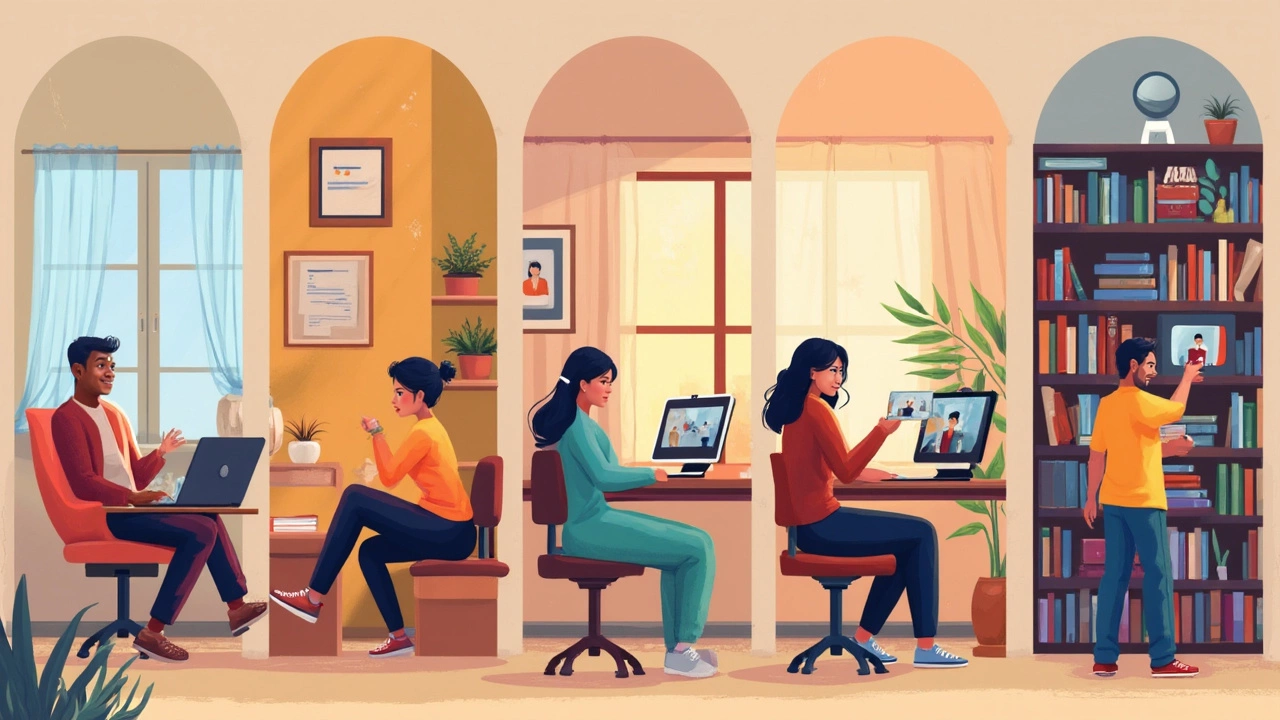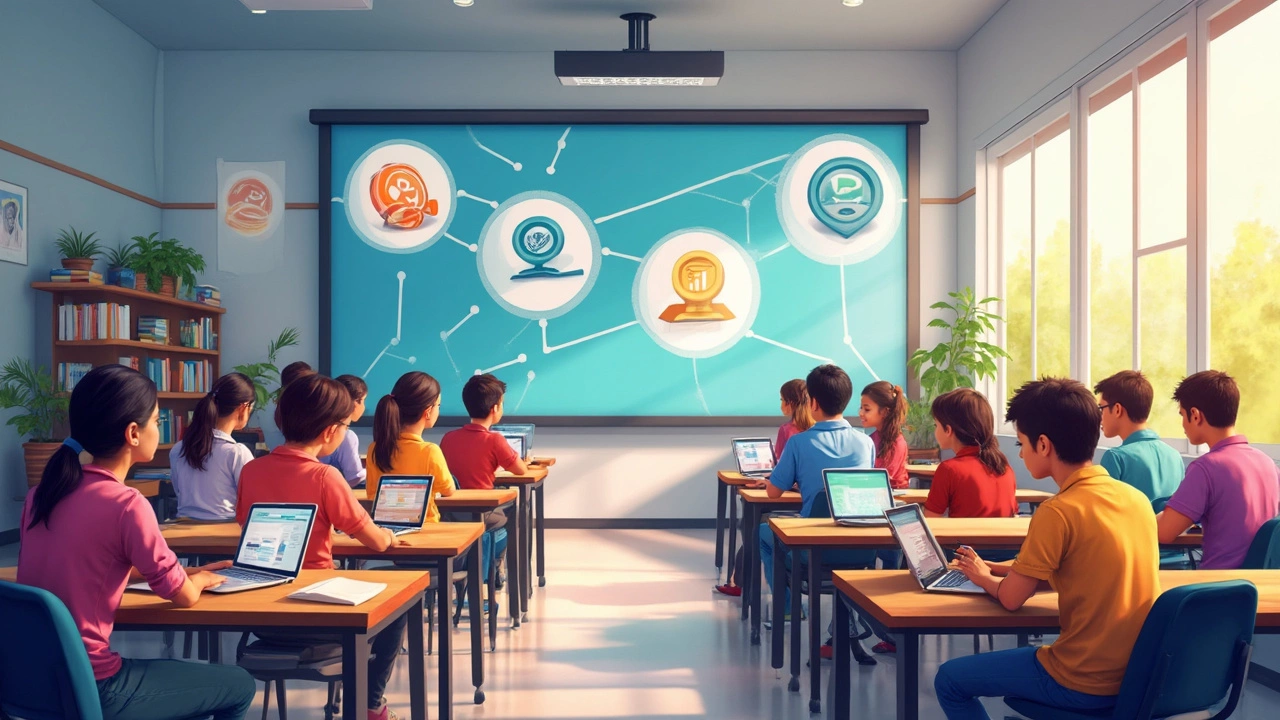Online courses explode in popularity year after year, but not all eLearning looks the same. Some let you binge lessons like a Netflix series, while others mirror traditional classrooms over Zoom. The key difference? The model behind the course.
If you’re lost in the swirl of options, you’re not alone. Picking an eLearning model isn’t just about personal taste—it can totally change your learning experience. Whether you want solo flexibility, live group discussion, or short bursts of info you can squeeze between meetings, the right model makes all the difference.
The good news: you don’t need fancy tech skills to figure out which way works best for you or your team. In fact, a quick breakdown of the top five eLearning models can save you hours of trial-and-error. Here’s the simple, real-world guide to each model, why they matter, and a few tips about what to expect before you dive into your next course.
Self-Paced Learning
Self-paced learning is exactly what it sounds like—learners have full control over when and how quickly they finish a course. Platforms like Coursera and Udemy made this model mainstream years ago. You get all materials upfront: videos, quizzes, and readings. Then, you work through them on your own schedule.
This model works for anyone with a busy life or unpredictable hours. No need to show up for live sessions or juggle set deadlines. If you want to knock out five lessons in one afternoon or just watch a couple of minutes during your lunch break, it’s up to you.
There’s solid data to back up how popular this approach is. Udemy reported in 2024 that over 60% of their users complete courses across several weeks rather than in a set time frame. That flexibility helps people actually finish courses, not just start them.
| Platform | Average Course Completion Time | Percent Using Self-Paced |
|---|---|---|
| Udemy | 3-6 weeks | 85% |
| Coursera | 4-8 weeks | 78% |
The biggest perk? You can fit eLearning around your life, not the other way around. This is perfect for working professionals, parents, or anyone who doesn’t want to feel pressured by live deadlines.
One important tip—self-paced courses work best if you can stick to goals on your own. Without reminders or a class to keep you going, it’s easy to let things slide. Set up weekly check-ins with yourself (or a friend) to stay on track. Most platforms send automated emails to nudge you along, but you’re in the driver’s seat.
- Access content anytime, from any device.
- Pause and repeat lessons as needed—great if you want to review tough topics.
- No set start or end dates means more freedom but also more personal responsibility.
If you’re after flexible, on-demand education, self-paced eLearning models deliver without the hassle of syncing everyone’s calendar. It’s all about learning your way, on your own time.
Instructor-Led Online Learning
Think of instructor-led online learning as the digital classroom—but without the commute or chalk dust. You get a real teacher leading sessions online, usually at set times, so everyone logs in together. These sessions can happen over Zoom, Microsoft Teams, Google Meet, or similar tools. This model is common for universities, professional training, and certification programs.
This setup offers all the advantages of a live classroom: asking questions in real time, getting instant feedback, and working in groups. Instructors can use slide decks, whiteboards, or breakout rooms just like in-person. People often say this format feels more personal and motivating than learning completely solo.
What makes instructor-led online learning stand out?
- eLearning models that use real-time sessions often result in higher engagement because there’s someone keeping you on track. You’re less likely to drift off or procrastinate.
- You learn on a schedule, which helps people who prefer routine or need structure.
- It’s great for complex topics—if you don’t get something, you can ask right away instead of hunting through forums.
- Many companies prefer this setup for onboarding or compliance training, since everyone gets the same info at the same time.
A quick tip: Prep ahead. Since these sessions stick to a calendar, being late is pretty much like missing a regular class. Also, check your tech—slow WiFi or an outdated webcam can make it hard to follow along or participate fully.
Instructor-led doesn’t mean endless lectures, either. The best courses mix things up with discussions, mini-quizzes, team projects, and polls. If you thrive on collaboration or need instructor guidance, this model is usually the best fit.

Blended Learning
Blended learning mixes classic face-to-face classes with online materials and activities. This model gives you the best of both worlds: personal connection with teachers and classmates, plus online flexibility. It's a big hit in places like universities and companies where real interaction still matters, but time and distance are real challenges.
Here's how blended learning usually works: you attend some lessons or workshops in person, then head online for modules, videos, or quizzes. Sometimes, you’ll do team work in class and save solo studying for online sessions. This way, you can clear up doubts with a teacher right there, while also making progress at your own pace later.
- Face-to-face sessions for hands-on activities, brainstorming, and support
- Online modules for theory, research, quizzes, and projects
- Flexible scheduling—perfect if you’re balancing work, study, and life
One standout fact: over 70% of US colleges use some form of blended learning. It’s also going mainstream with global companies like IBM and Google who use blended approaches for employee training. This model isn’t following a one-size-fits-all formula—it gets customized by each school, business, or instructor based on goals and resources.
| Type | Mix of Online & In-Person | Who Uses It |
|---|---|---|
| Rotation Model | Set schedule for switching between online and classroom work | Schools K-12, language centers |
| Flex Model | Primarily online with optional classroom meetups | Corporate training, universities |
| Enriched Virtual | Mostly online, required in-person sessions | High school and college courses |
Thinking of trying blended learning? First, check if you feel comfortable both online and face-to-face. Also, set a schedule that blocks time for both—this stops you from falling behind. Tip: Don’t skip the in-person parts. That’s where you get feedback, join live discussions, and connect with your classmates—a huge part of what makes blended learning work.
Blended learning isn’t just about convenience. It takes the pressure off sitting in a classroom for hours and lets you digest tough stuff at your own speed. For folks who need the social side but crave flexibility, it’s the perfect fit within eLearning models.
Flipped Classroom
The flipped classroom model turns the old-school idea of homework upside down. Instead of listening to lectures in class and then doing homework afterward, students watch video lessons or read course materials at home, so class time can be used for hands-on work, discussions, or problem-solving.
This approach isn’t just a trend—schools and companies everywhere use it for better learning results. Back in 2012, Clintondale High School near Detroit became the first US school to fully adopt the flipped model. Results shocked everyone: in just one year, failure rates dropped from 35% to 10% in English, and similar drops happened in other subjects.
Here’s how the flipped classroom model usually works:
- Before class, learners watch video tutorials or read about the day’s topic via their eLearning models platform.
- In scheduled sessions (online or in-person), everyone works on exercises, group projects, or has guided debates with the teacher around to help out.
- Students get feedback on the spot, instead of waiting days for graded homework.
The real advantage here is using valuable “face time” for things like Q&A, brainstorming, and all the tricky stuff that’s tough to do alone. This setup encourages participation—even quiet students are more likely to speak up, since they come prepared with the basics.
| Flipped Classroom Stat | Result |
|---|---|
| Class Failure Rate (Clintondale HS) | Dropped from 35% to 10% |
| Homework Completion Rate (Flipped vs. Traditional) | Up to 80% increase |
| Student Engagement Score | Rises by 60% when using active, flipped methods |
Want to try this model? Make sure your platform supports video, interactive content, and real-time chat or forums. Keep prep videos short (10-15 minutes), and plan plenty of open-ended activities for your live sessions. The more active the class, the better the results.

Microlearning
Microlearning chunk lessons into super-short, focused bursts—think two to five minutes, max. Instead of sitting through a giant lecture, you break it down into bite-sized videos, quizzes, or quick-read cards. This model exploded with the rise of mobile learning. People want quick wins and don’t always have a spare hour to learn something new at once.
One study by the Journal of Applied Psychology found that learning in small segments improved transfer of knowledge by 17% compared to traditional longer classes. That’s a concrete win if you tend to forget what you just learned.
| Microlearning Stat | Value |
|---|---|
| Average lesson length | 2–5 minutes |
| Knowledge retention increase | 17% |
| Popular device | Smartphone |
Microlearning works because it fits real life. Got a bus ride? You can finish a lesson before your stop. Data from LinkedIn Learning in 2024 showed that lessons under 7 minutes had 50% higher completion rates than longer formats. This isn’t just for students—almost every major company now includes microlearning for staff training, compliance, and onboarding. Why? It cuts time, keeps attention, and usually costs less than old-school training days.
“By delivering content in short, memorable bursts, microlearning boosts engagement and recall in busy professionals,” says Dr. Jane Hart, founder of the Centre for Learning & Performance Technologies.
- Great for busy people juggling work and life
- Makes reviewing and remembering details way easier
- Perfect for skills you use right away, like customer service scripts or safety rules
One thing, though: microlearning isn’t perfect if you need deep, complex understanding. But for facts, processes, language practice, and workplace hacks? It almost always wins. If you want a model to fit tight schedules and boost retention, microlearning checks every box.



